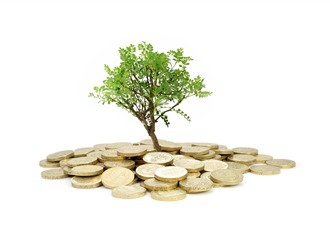
Green profits
Improving sales or maximising margins are not the only ways to try to increase profitability. Getting your operational waste under control and properly managed can also have a significant impact, finds Catherine Carter.
How much waste are you throwing away every day? More importantly, how much money are you wasting? According to Envirowise waste typically costs an operation 4.5 percent of its turnover. Is yours one of them? If it is and you are put off taking action by perceived cost and time implications, then take a look at some of the enviable results achieved by Park Communications. In twelve months it recorded a 42 percent reduction per impression in waste to landfill and a 20 percent cut per impression for packaging. It also reduced waster usage by 37 percent and electricity consumption by 7.5 percent per impression. While Eco Management and Audit Scheme (EMAS) and International Organisation for Standardisation (ISO) 14001 accreditations clearly show how sustainability is embedded in the operations.
Its ability to implement fundamental, site-wide measures was aided by its relocation as part of the Olympic development.
''It had a huge impact. We were able to move to a virgin set of premises so we could create the best logical flow with the lay out. We put in centralised air conditioning and light sensors,” explains process manager, Simon Hopkins.
Moving premises can obviously aid the introduction of effective measures but how does a long-standing printer add initiatives successfully? For Denny Bros segregation was the key.
''We monitor very closely the utilisation of materials throughout the operation,” comments quality manager, Julian Colman, who adds: “We have found that people are pretty switched on to it all as they are expected to separate waste at home. It is good to be environmentally conscious and commercially it makes big difference.”
ISO14001-certified RCS focused on power consumption, reducing electricity demand by more than 65 percent. Michael Todd, managing director, is turning his attention to other areas in the coming year, commenting: “We will be looking even more closely at our ‘un-recyclable’ waste with the aim of almost entirely eliminating it. We also intend to spend more time looking at ‘whole life’ cost of our inputs with a view to further reducing our carbon footprint.”
What is waste?
So how do you define waste? Todd says it is difficult, because ‘simple waste is not what we have’.
He adds: “We have recyclable waste and un-recyclable waste. In our minds only un-recyclable waste is really waste. We fill less than one skip each three weeks from the office as well as production.
“By streaming into a wide number of different channels it has reduced the amount of un-recyclable waste significantly—used toner now gets reused for finger print dusting and pallet wrap polythene is made into furniture.”
A new measure will see waste from plastic encapsulated card ‘Datacards’ transformed into chips and used as admix for blocks.
''Much of what we have done has stemmed initially from the green ethics of our business,” says Todd, adding: “But what we have found is that by taking a little more care to stream waste, and produce saleable commodities, the small overhead of time is more than compensated for while ‘waste’has become an additional revenue stream.”
For Park Communications it starts at the beginning, as Hopkins explains: “We look at and monitor what we are buying, not just raw materials, but other items as well such as water and electrical usage. Anything we use or buy will at some point produce a level of waste. Waste is not only a physical product, it can also can apply to time, energy and effectiveness in the manufacturing plant. A lot of people get hung up at what the dustbin man collects but that is working backwards. It is easier to look at the very beginning and measure from there.”
He says a carefully created management information system (MIS) is useful in monitoring what is and is not used, adding: ''Waste management projects will provide a fairly quick and robust return on investment. You are winning with not having to buy material and not having to pay for it to be transported away. Also any reduction at the outset means you are not wasting manufacturing costs. Only 1 percent of our waste goes to landfill. Now we are starting to struggle with new initiatives and have started focussing on kitchen and general office waste.”
Denny Bros has an audit process that helps identify different ways to minimise power use.
''We have made between 85 to 90 percent savings with our warehouse lighting that uses proximity sensors,” says Colman, who adds: “Also things like compressed air and shrinkwrapping are surprisingly expensive to run and if we can reduce what we use, we can make big savings.
''We have picked the ripe cherries from the bottom of the tree, now we have to look a bit harder at projects. For example we are keeping an eye on the light emitting diode (LED) lighting technology for the office but it is currently too expensive so doesn’t give sensible commercial payback yet.”